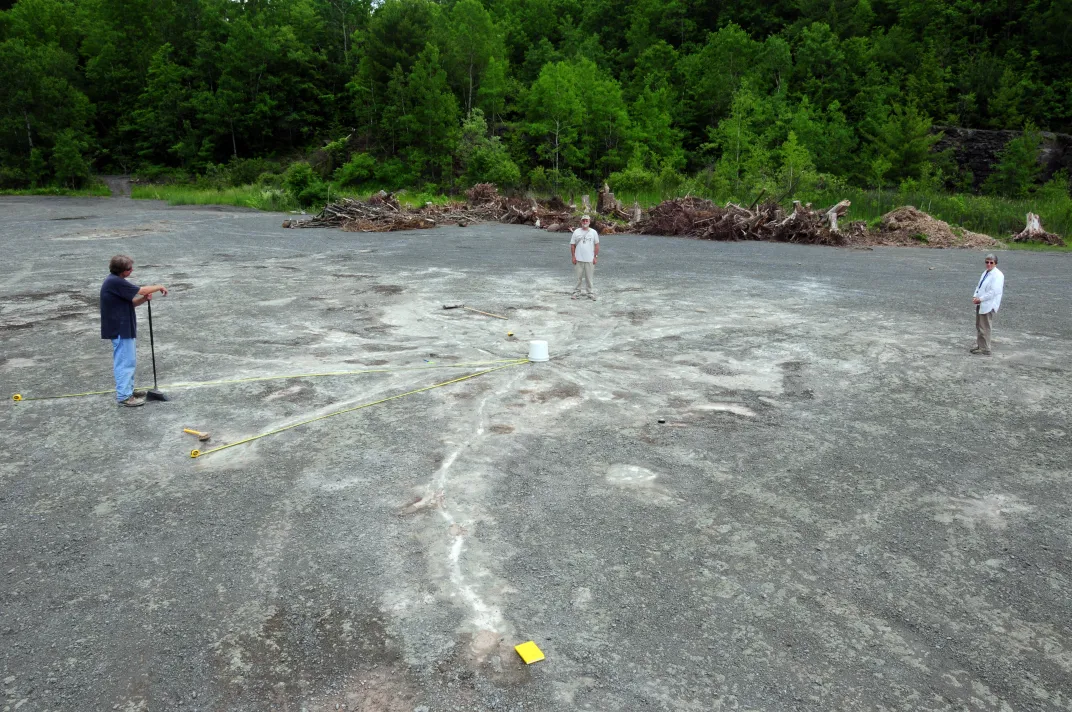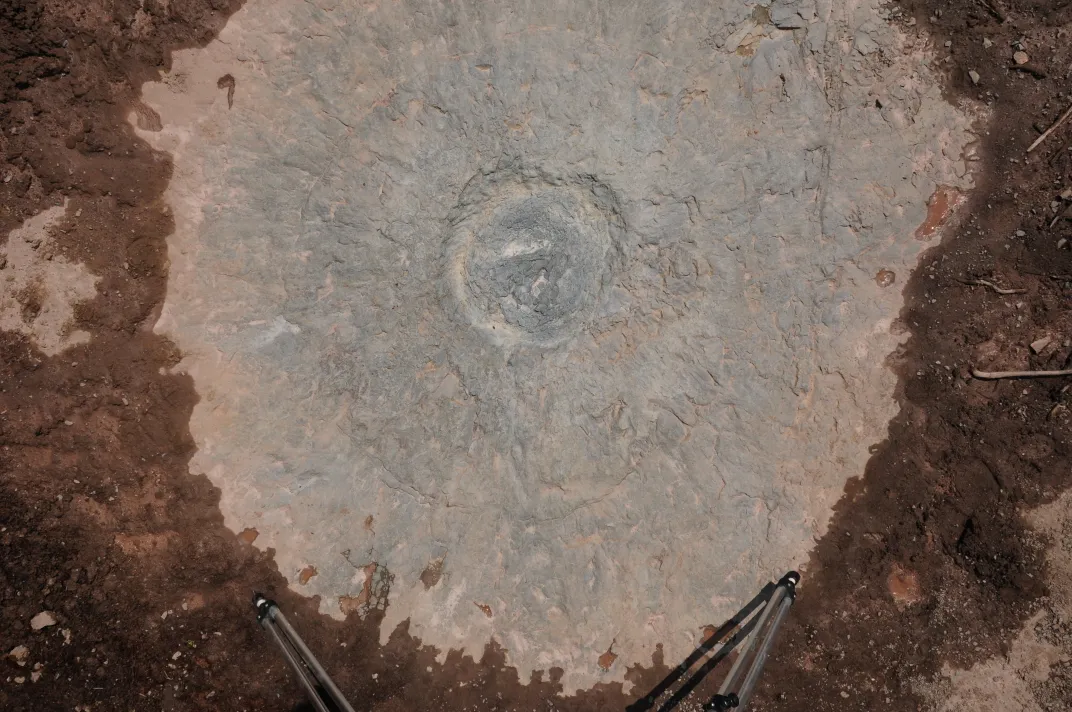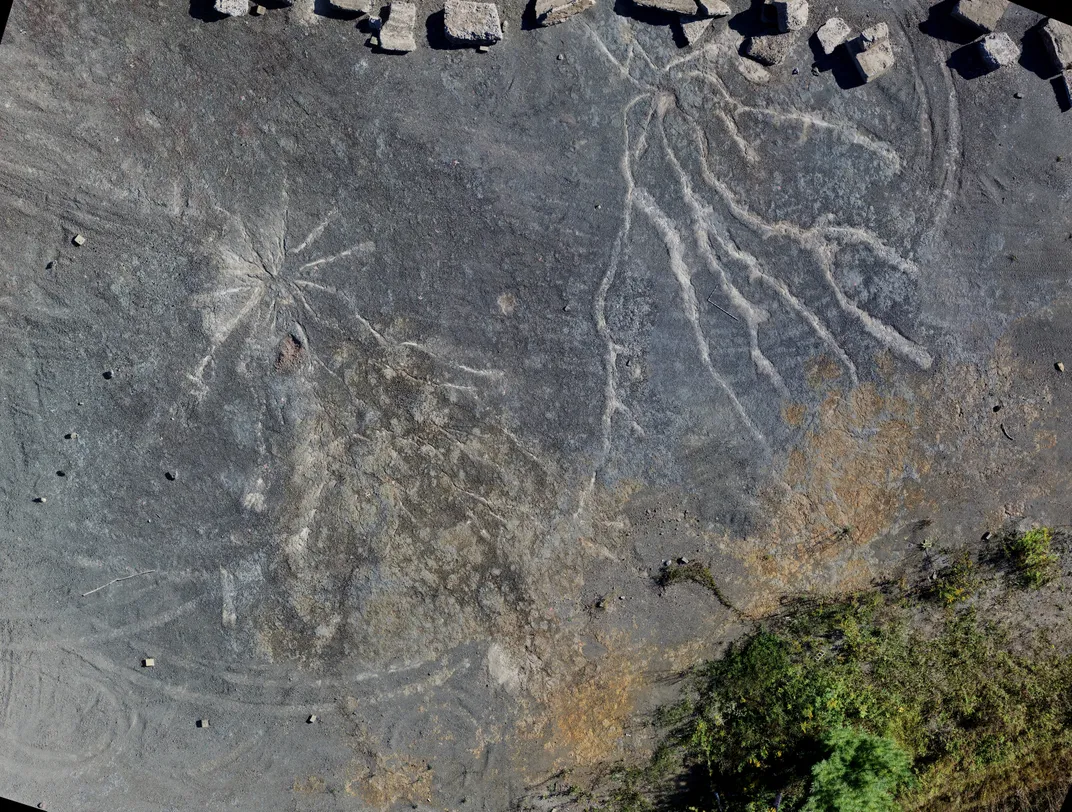The World’s Oldest Forest Has 385-Million-Year-Old Tree Roots
A trove of arboreal fossils pushes back the origin of modern forests and sophisticated tree roots
/https://tf-cmsv2-smithsonianmag-media.s3.amazonaws.com/filer/25/09/2509925f-debb-47fd-bc5f-0a435b385778/cairo_119-135_pan.jpg)
At three trillion strong, Earth’s trees are estimated to outnumber the stars in the Milky Way. These woody wonders sponge carbon dioxide out of the skies, brace soil against erosion, cycle water through ecosystems and support countless forms of life. And we largely have their sophisticated root systems to thank.
Sprouting from the base of tree trunks, roots are the arboreal equivalent of a digestive tract, exchanging water and nutrients with surrounding soils. Roots literally anchor a plant, and the more extensive they are, the bigger and stronger the stuff above ground can grow. In their modern forms, they helped trees dominate their habitats—and spread across the globe.
“Roots maximize [a tree’s] physiological capacity,” says Christopher Berry, a paleobotanist at Cardiff University in the United Kingdom. “An efficient rooting system is key to being a successful tree.”
But roots didn’t always look as they do today, and researchers have long puzzled over how and when trees evolved their expansive underground plumbing.

Now, new research from Berry and his colleagues suggests the modern versions of these stupendous structures are more deeply rooted in the arboreal family tree than ever thought before. Their team has uncovered Earth’s oldest known forest outside Cairo, New York, as detailed today in the journal Current Biology. At 385 million years old, the ancient woodland predates the rise of seed-producing plants, a group that includes almost all living trees. The Paleozoic forest is also home to the remnants of intricate tree root systems that bear an uncanny resemblance to those still around today.
Trees, it seems, found their ideal rooting strategy early on—and have stuck with it ever since.
“This pushes … [the origins] of this kind of root system back in time,” says University of North Carolina, Chapel Hill’s Patricia Gensel, a paleobotanist specializing in plants of the Devonian, which spans the period from 419 million to 360 million years ago. “By the mid-Devonian, we have pretty sophisticated trees,” says Gensel, who was not involved in the study. “Before this, we never would’ve been able to say that.”
Researchers have been aware of the Cairo site and its potential trove of fossils for decades. But it wasn’t until 2009 that Berry’s colleagues at the New York State Museum uncovered one of the site’s greatest gems: the pristinely preserved remnants of an elaborate system of roots.
Splaying out some 18 feet from the base of their trunks and digging deep into the soil, the roots were sturdy, branched, and intricate, with delicate rootlets splaying from their tips. They looked, in other words, “strikingly modern, essentially what you’d see outside in my yard right now,” says lead author William Stein, a paleobotanist at Binghamton University. But separating the fossils from Stein’s neighborhood spruces is an evolutionary chasm of about 385 million years.
The fossilized roots, the researchers realized, belonged to Archaeopteris (not to be confused with the unrelated bird-like dinosaur Archaeopteryx), a genus that researchers think produced the first “modern tree.” Like today’s oaks and maples, Archaeopteris boasted flat, green leaves ideal for absorbing sunlight and girthy, lumber-worthy trunks that helped the plant grow out as well as up. The massive roots revealed at Cairo now added another contemporary characteristic to Archaeopteris, giving the trees a trifecta of resource-utilizing features that likely helped them take over the world’s forests toward the end of the Devonian, Stein says.
“We call it a revolution,” he says. “A lot of these features ... signal higher metabolic rate. And they show up in Archaeopteris all together, like a miracle, almost.”
Archaeopteris’ arrival at Cairo was earlier than expected, and it came as quite a surprise to the team. Just 25 miles to the west is another site, Gilboa, widely considered the world’s most ancient fossil forest before being unseated by its neighbor Cairo. In Gilboa, forests had once grown thick with Eospermatopteris, a genus of plants resembling modern tree ferns with fronds in place of leaves and hollow, spongy trunks.

Eospermatopteris trees were a fixture of Cairo as well, hinting that the plant was something of a generalist, says Molly Ng, a paleobotanist at the University of Michigan who wasn’t involved in the study. But their bases were rimmed by shallow, spindly roots which probably lived only a year or two before the trees replaced them—nothing like the vast network supporting their Archaeopteris relatives.
Unlike Eospermatopteris, Archaeopteris didn’t spread into Gilboa, likely because the site was a little too wet for the deep-rooting tree’s liking, Berry says. At Cairo, the soils seem to have experienced periods of dryness, allowing Archaeopteris to stretch deep into the soil without running the risk of drowning. The region did, however, experience the occasional flood, including a pretty severe one that froze the team’s newly discovered fossils in place hundreds of millions of years ago.
What prompted Archaeopteris to evolve its suite of nutrient-guzzling traits is still unclear. But whenever and however that shift occurred, it signaled a dramatic departure from the shrimpy plants carpeting the planet a few million years prior, Gensel says. “What’s at the Cairo site ... is mindblowing in a sense.”
The team’s find also tells us a little about who was growing with whom in the mid-Devonian, says Cindy Looy, a paleobotanist at the University of California, Berkeley, who wasn’t involved in the study. “There are very few Devonian sites ... where you can get an idea of what a forest looked like three-dimensionally,” she says. But Cairo, with its exquisite preservation, is a notable exception.

Though separated by a couple dozen miles and a few million years, Stein thinks the fossils at Cairo and Gilboa were part of the same landscape that once covered the Catskill Mountains—one with distinct arboreal neighborhoods, each home to unique ecosystems of life.
Collectively, these forests and others like them went on to reshape the entire planet. Woody trunks sopped carbon from the air, before dying and depositing the molecules underground to fertilize new life. Leaves shaded the soil, protecting its residents from the sun’s relentless rays. Roots wrestled into the dirt, altering its chemistry and shuttling carbonic acid toward the sea. Moored by trees, entire landscapes became bolstered against floods and inclement weather.
Drained of carbon dioxide, the atmosphere cooled dramatically, likely helping to plunge the globe into a prolonged period of glaciation. Several branches of the tree of life fizzled out, while other species moved onto land and diversified. “The arrival of these forests was the creation of the modern world,” Berry says.
These findings, Stein says, put a sobering lens on the climatic shifts our planet is undergoing now. Around the world, forests are being cut away, and the ancient carbon left by prehistoric trees—our main source of coal—is being dug up and burned. “What’s happening today is the opposite of what happened in the Devonian,” Stein says. Once again, sweeping change begins and ends with trees.
/https://tf-cmsv2-smithsonianmag-media.s3.amazonaws.com/accounts/headshot/10172852_10152012979290896_320129237_n.jpg)


/https://tf-cmsv2-smithsonianmag-media.s3.amazonaws.com/accounts/headshot/10172852_10152012979290896_320129237_n.jpg)